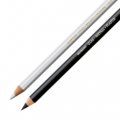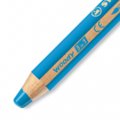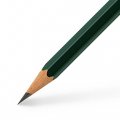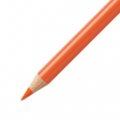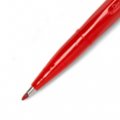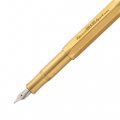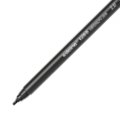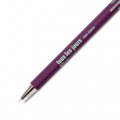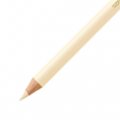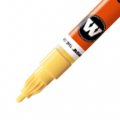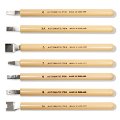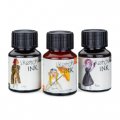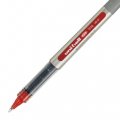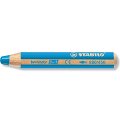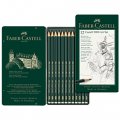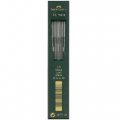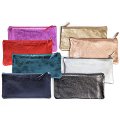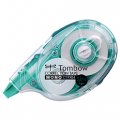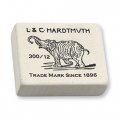Pencils & Accessories
Information about pencils & leads
“It feels greasy and stains the fingers but is nonetheless good for writing and drawing.” This is the first commentary following the discovery of a grey-black shiny material in 1565 in Borrowdale, a city in the Cumberland Hills of England. It was first thought to be some different kind of galena because its appearance and composition closely resembled that long known mineral. In order to be able to use the extracted “lead” for writing without getting the fingers dirty, the first pencil makers cut the new material into narrow rectangular rods which were then encased in wood – the pencil was born!
Later, the Swedish chemist Karl Wilhelm Scheele was able to prove that the lead in pencils was not really lead at all but rather a completely different material, namely, crystallized carbon. (So much for the old joke that you can lead a horse to water but a pencil has to be lead!) Scheele gave this type of carbon the name “graphite” which was derived from the Greek word “grapheln” which means “writing”. In German the word for pencil is “Bleistift” (lead pin) and every attempt to change the name to “Graphitstift” (graphite pin) failed miserably because by the time the truth had been found the original name was too deeply imbedded in the language. Similarly in English, the word for the working part of a pencil is still called “lead”.
The eventual depleting of the Borrowdale graphite led to a new technological development: in 1794 both the Frenchman Nicholas-Jaques Conte and, at almost the same time, the Austrian Joseph Hardtmuth were able to produce pencils by using a mixture of graphite and clay. The “leads” of the pencils were subsequently hardened through a process which consisted of burning them at high temperatures. What is really noteworthy about the graphite-clay process, which is still used to this day: it is possible to manufacture pencils with different grades of hardness.
And how does the lead find its way into the pencil? Most high quality pencils are produced today using cedar wood. This wood is practically knotless and lends itself extremely well to modern automated production processes. It is also lightweight and can be cut to a clean point. The cedar wood is delivered to the pencil factory already in slat form. These slats then have grooves milled into them and these grooves are subsequently filled with the leads. Then a second slat is glued and pressed onto the first slat and finally the profile of the pencil is milled into shape. Only at the very end of the process is paint applied and the pencil designation embossed into the wood.
During the gluing of the lead, something very important occurs: the entire surface of the lead and the whole length of the pencil are coated with a synthetic resin and these are glued then into place on the wood pieces. It is in this way that the breaking resistance during sharpening is increased to the point that making a point is much easier, the lead remains intact when the pencil falls to the ground and, of course, it will not fall out of the end of the pencil.
How does a pencil write? The surface of the paper works like sandpaper and scrapes the finest of particles from the lead. The rougher the paper, the more lead particles are rubbed from the lead. Because of this, rough or, alternatively, hard paper requires a harder lead. For smooth or, alternatively, soft paper, a softer lead is indicated.
